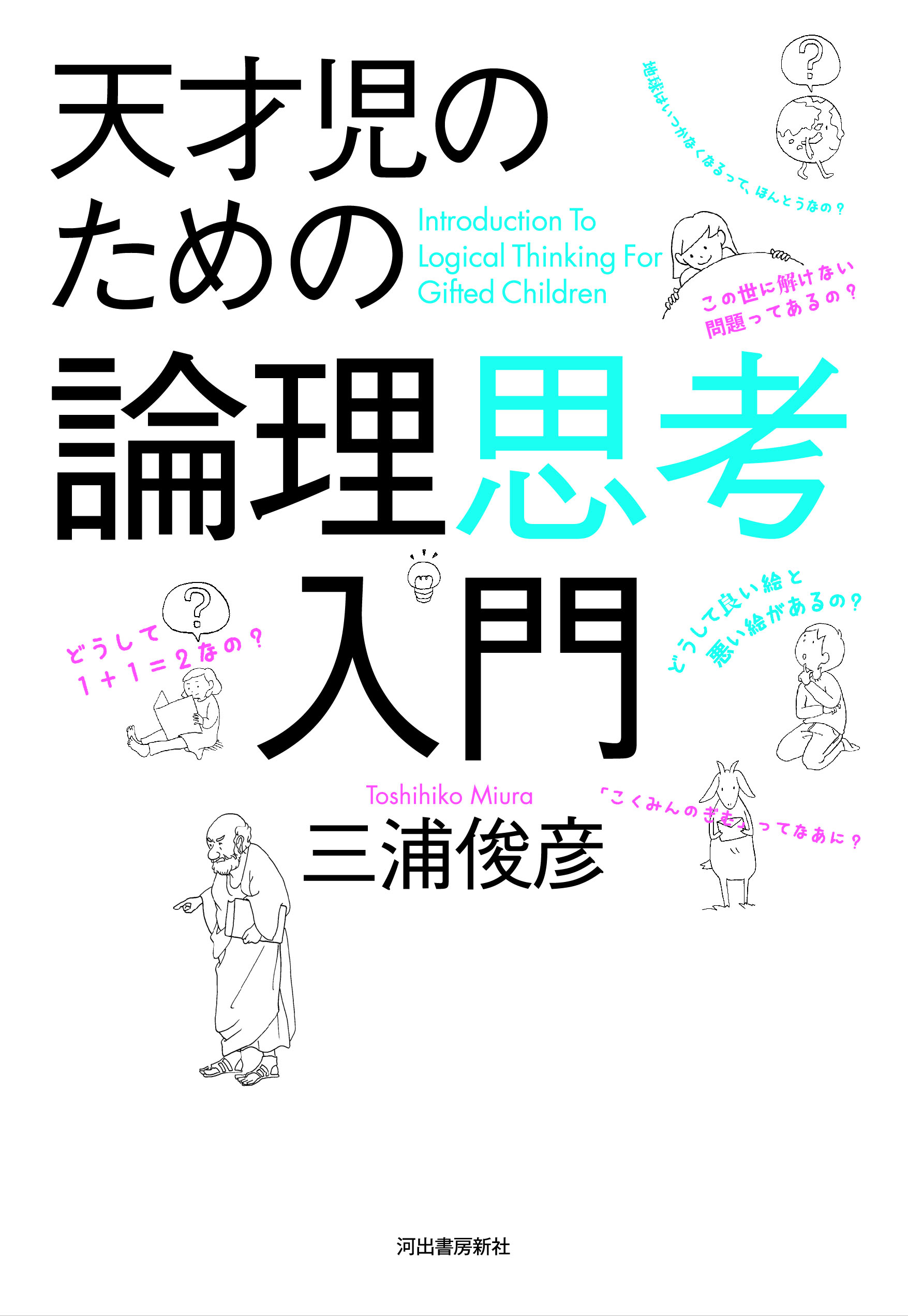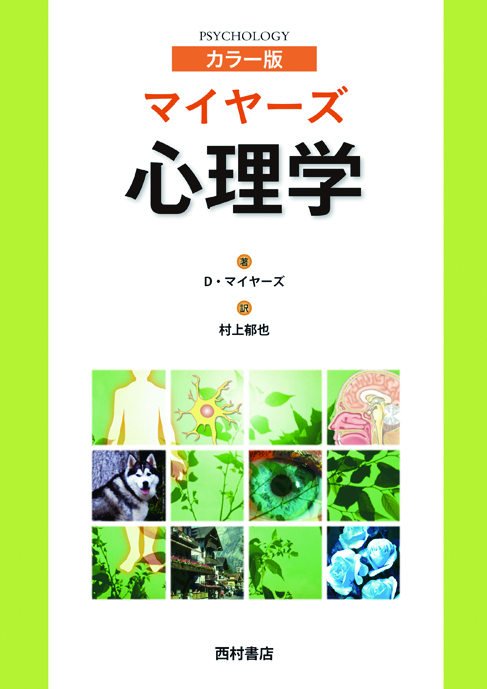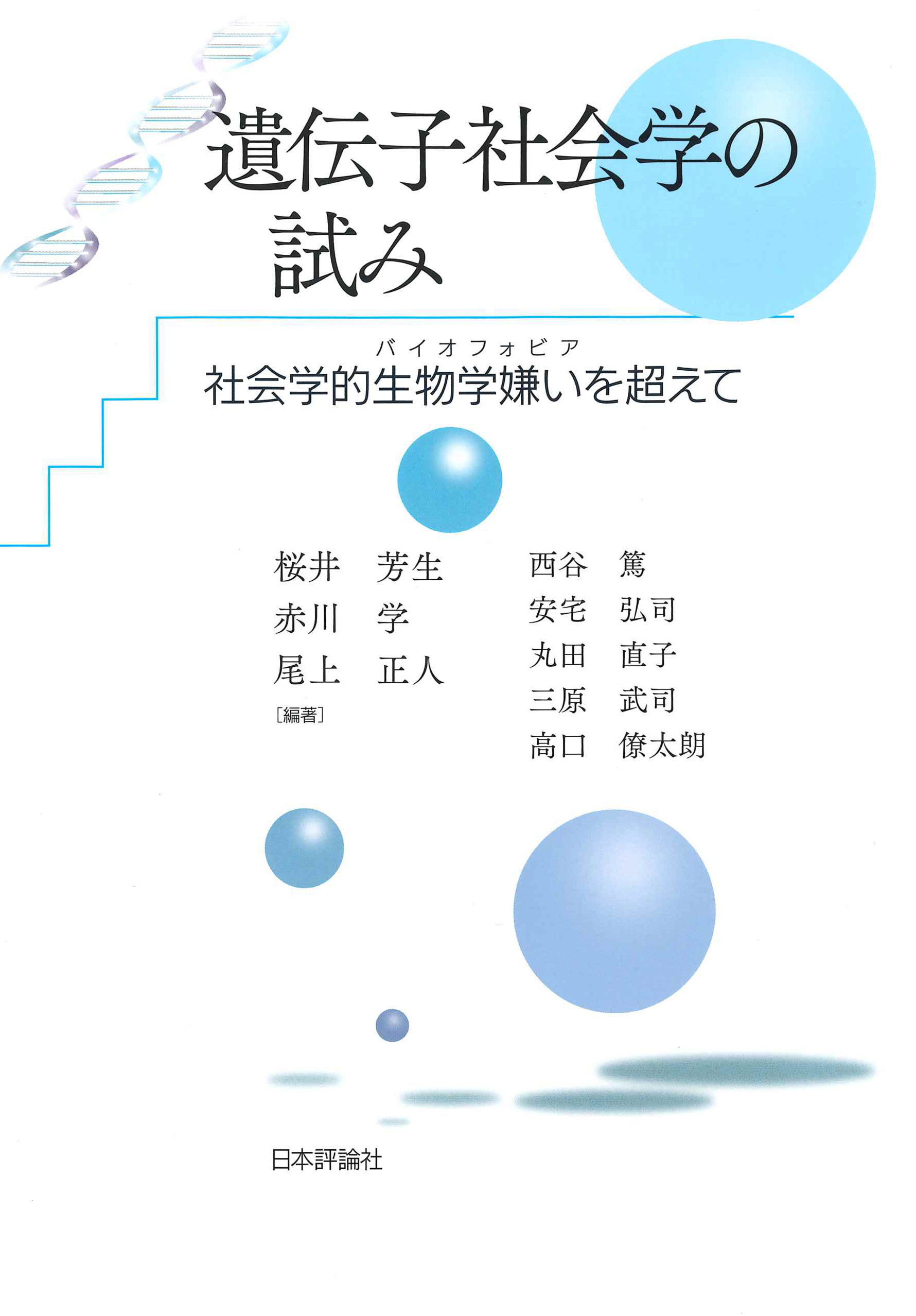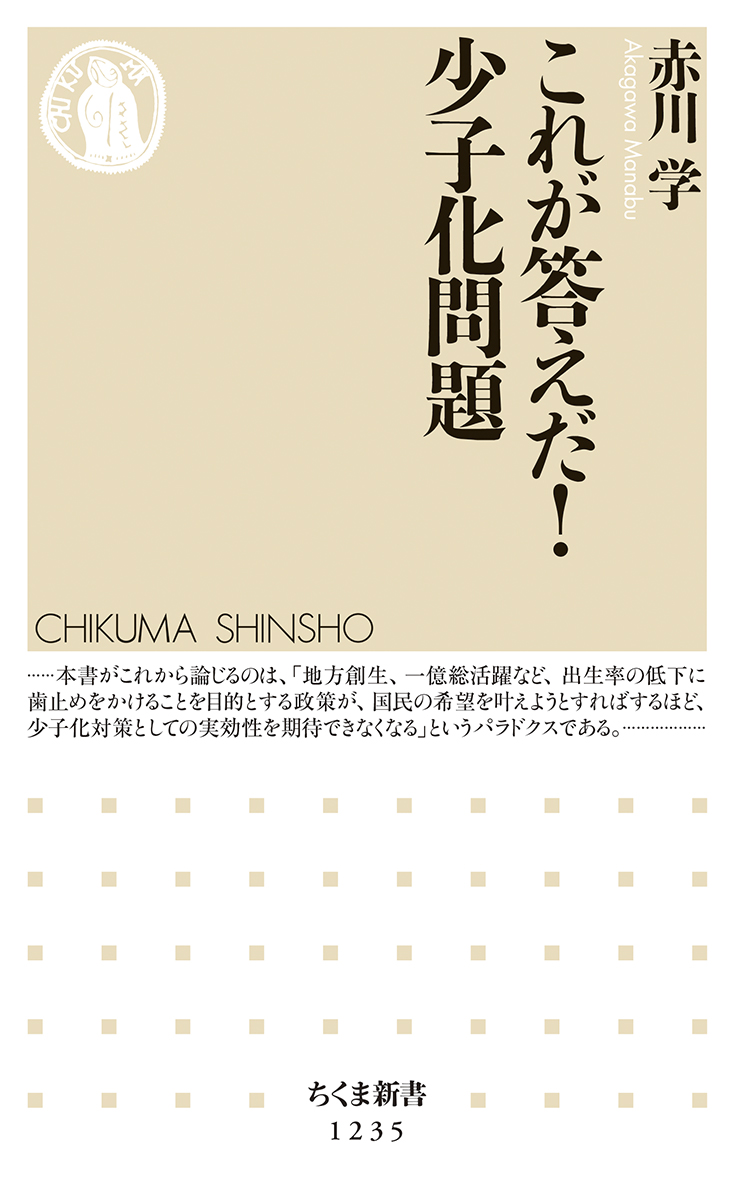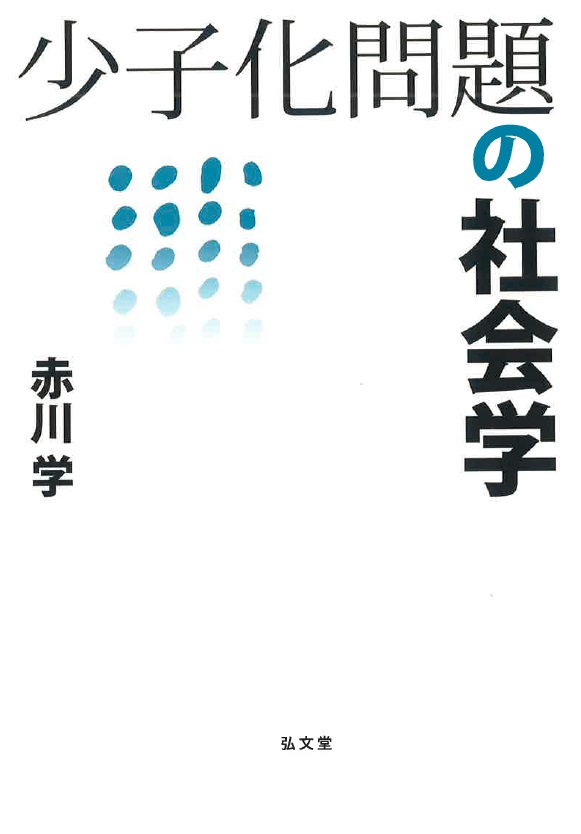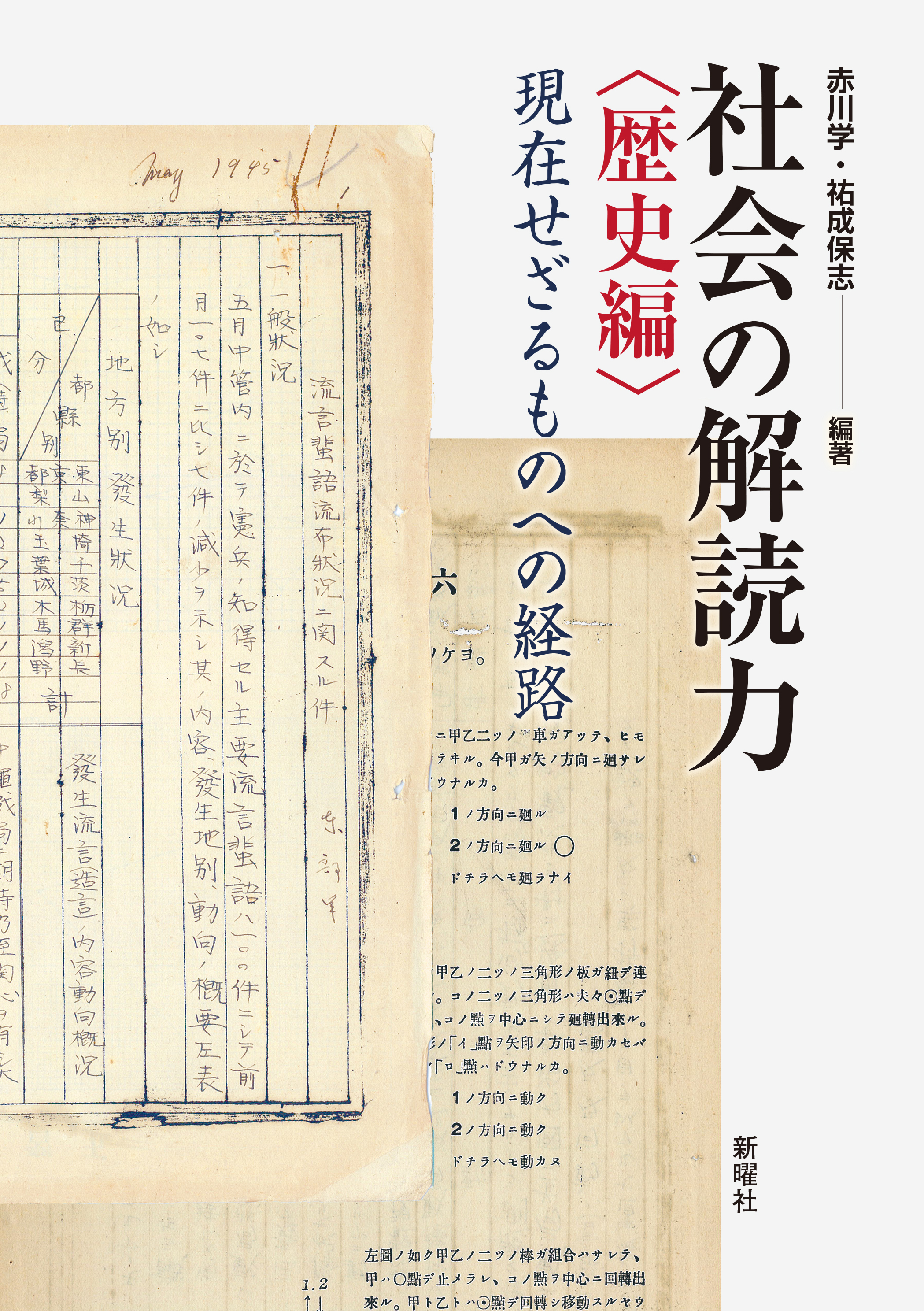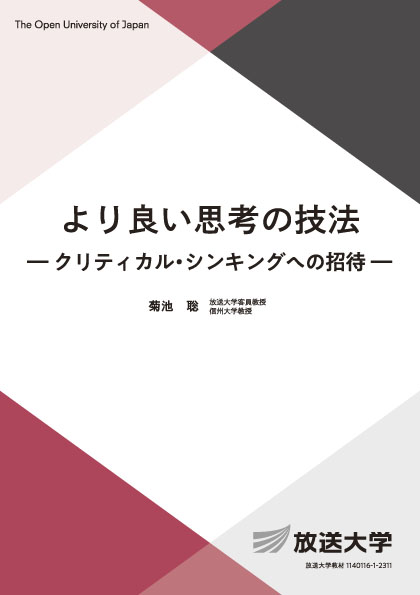
Title
Open University of Japan Teaching Materials Yoriyoi Shiko no Giho (Techniques for Better Thinking - An Invitation to Critical Thinking)
Size
316 pages, A5 format
Language
Japanese
Released
2023
ISBN
978-4-595-32384-3
Published by
Foundation for the Promotion of The Open University of Japan
Book Info
See Book Availability at Library
Japanese Page
This book takes up “critical thinking” as one of the general skills that we need to learn to live in this society. Critical thinking is defined as “high-quality thinking based on standards” that leads to better problem solving and decision making by enabling individuals to carefully, skeptically, and without prejudice examine and evaluate implicit assumptions and implications hidden in information, rather than simply accepting the information without question.
The book, which is a textbook developed by the Open University of Japan, consists of 15 chapters—12 of which were written by Satoru Kikuchi, a cognitive psychologist, with the remaining three chapters on logic and philosophy, psychology, and sociology being authored by Tetsuji Iseda, Takashi Kusumi, and Manabu Akagawa, respectively. The chapter that I (Akagawa) authored was Chapter 11 on “Critical Thinking from the Standpoint of Sociology,” whose main points are described here.
This chapter introduces the viewpoint of the “constructionism of social problems,” which posits that social problems are socially constructed by people when they claims them as problems. Objectively defining the common requirements of social problems is difficult. Instead, what we need to do is analyze what people subjectively perceive as a problem, the claims that they make as a results of this perception, and how these claims are linked together.
To this end, the chapter proposes a natural history model of social problems that consists of the following six stages: claimsmaking, media coverage, public reaction, policymaking, social problems work and policy outcomes. The chapter also seeks to analyze the “rhetoric” of claims, which consists of the three elements of grounds, warrants, and conclusions. In particular, the chapter discusses how data and statistics on social problems reflect the customary practices of the organization collecting, analyzing, and publishing the data as well as the importance of analyzing how statistics are used and sometimes distorted as part of claimsmaking about social problems.
Finally, the chapter points out that, because the society that sociology is concerned with involves interactions among people, there is also interaction between the researcher and the people being studied. For example, given the potential for researchers’ predictions to influence the object of study (resulting in a “self-fulfilling prophecy”) and the tendency for researchers to serve as “echo chambers” for themselves that reproduce certain theories and ideologies, the most challenging aspect of critical thinking from the standpoint of sociology is “to be critical of oneself.”
The goal of the book is to introduce critical thinking as a technique for better thinking that can be used universally, regardless of discipline, and to explore debate as a means of better decision making through the coordination of different views rather than simply a means for debunking the other side. The book is intended for a wide range of general readers, not just college students.
(Written by AKAGAWA Manabu, Professor, Graduate School of Humanities and Sociology / 2023)



 Find a book
Find a book


